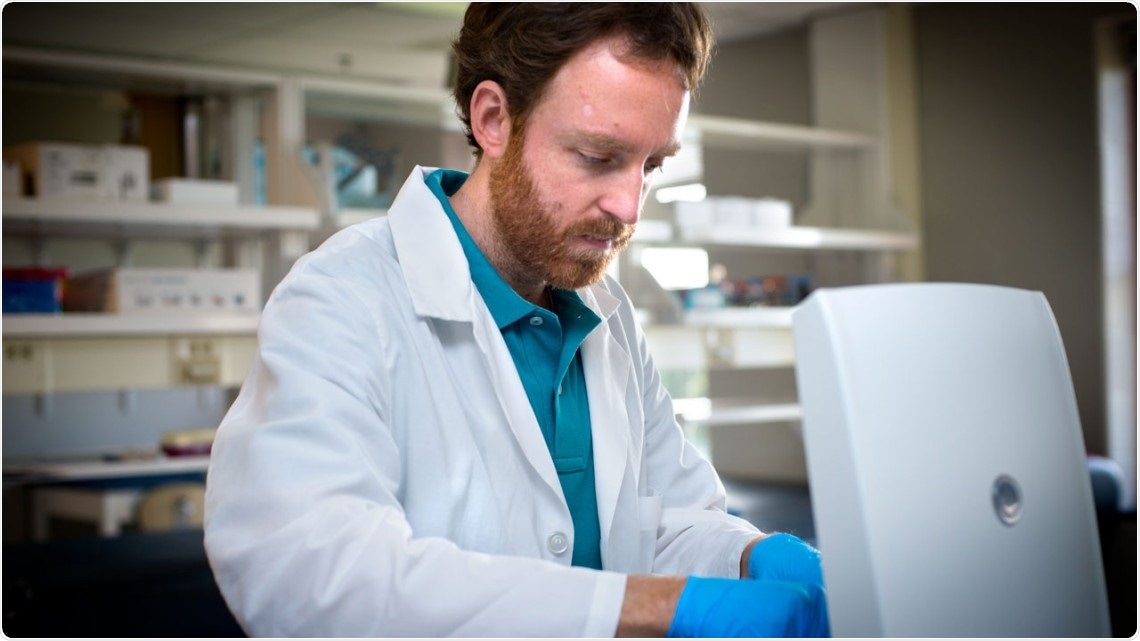A new Cornell research throws light on a contentious dispute in epigenetics, which refers to the collection of molecular changes that occur on the top of the genome to control how genes are switched on and off without affecting the DNA sequence of a cell.

Charles Danko, the Robert N. Noyce Associate Professor in Life Science and Technology, in his lab at the Baker Institute for Animal Health. Image Credit: Rachel Philipson/Provided.
According to the researchers, the discovery might simplify new genomes’ interpretation from less-studied species.
Histone marks—little chemical tags attached to histones, the spool-like proteins that wrap DNA around the inside of the nucleus—have long been a source of debate among epigeneticists. Histone marks may have a part in activating genes and initiating transcription, the process of converting DNA into RNA to generate proteins or perform other biological tasks, according to some researchers.
Histone marks, on the other hand, are set down throughout the process of transcription and do not play a regulatory role, according to the current research.
This potentially has big implications for the way that we interpret genomes. We would like to apply these same technologies to interpret the genome function in horse, dog, and other veterinary species where there is not as much funding for research.”
Charles Danko, Study Corresponding Author and Robert N. Noyce Associate Professor, Life Science & Technology, Baker Institute in the College of Veterinary Medicine
Zhong Wang, a previous member of the Danko lab who is now a professor at Dalian University in China, is a co-lead author on the Nature Genetics research, which was published on March 10th, 2022.
Wang developed a computer method that identifies where histone marks appear in the genome using publically accessible transcription data from mice and humans. The tool, known as dHIT, uses information from a data experiment to show where transcription is active on chromosomes.
To generate transcription data, researchers can utilize a technique known ChRO-seq, which was created in the Danko lab, or a comparable approach called PRO-seq, which was developed at Cornell.
Danko’s team was able to predict histone sites in mouse, human, and horse cells using this method. Scientists demonstrated that dHIT works nearly as well as biological investigations that assess the position of each mark directly.
Data and samples from horses were provided by Dr Doug Antczak, the Dorothy Havemeyer McConville Professor of Equine Medicine at Baker, and collaborators from the Functional Annotation of Animal Genomes (FAANG) project.
Alexandra Chivu, a Danko lab doctoral student and co-lead author, utilized dHIT in conjunction with experimental approaches to measure histone marks to figure out what occurs when transcription is inhibited in a cell. Chivu demonstrated that histone marks vanish without transcription, indicating that their complicated patterns are frequently reliant on transcription.
Before the introduction of dHIT, whole scientific consortia of researchers would collaborate on a single genome from a model species to determine where histone marks were located. These new tools make the procedure a lot easier.
Danko aims to use histone marks to tease out their true function by deleting them and evaluating the effect on transcription.
If we accept that these marks are parts of the machinery of transcription, then a really interesting question is, what parts of that machinery are they involved in? What is their role if it’s not regulation?”
Charles Danko, Study Corresponding Author and Robert N. Noyce Associate Professor, Life Science & Technology, Baker Institute in the College of Veterinary Medicine
Source:
Journal reference:
Wang, Z., et al. (2022) Prediction of histone post-translational modification patterns based on nascent transcription data. Nature Genetics. doi.org/10.1038/s41588-022-01026-x.